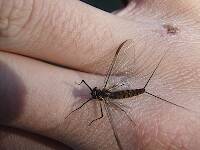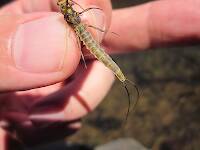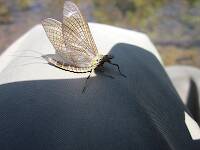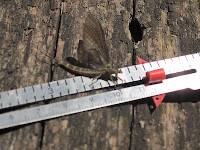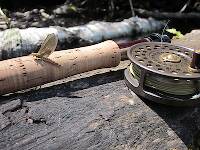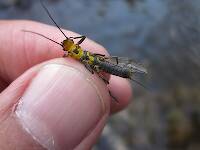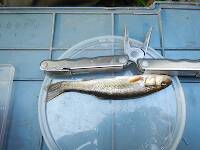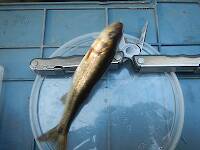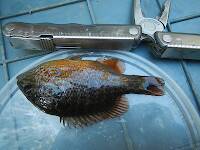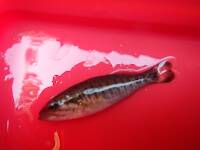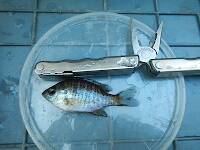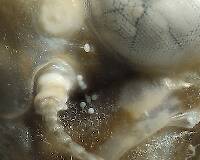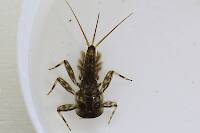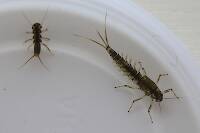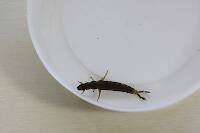
Blue-winged Olives
Baetis
Tiny Baetis mayflies are perhaps the most commonly encountered and imitated by anglers on all American trout streams due to their great abundance, widespread distribution, and trout-friendly emergence habits.
Featured on the forum

This one was surprisingly straightforward to identify. The lack of a sclerite at the base of the lateral hump narrows the field quite a bit, and the other options followed fairly obvious characteristics to Clostoeca, which only has one species, Clostoeca disjuncta.

Troutnut is a project started in 2003 by salmonid ecologist Jason "Troutnut" Neuswanger to help anglers and
fly tyers unabashedly embrace the entomological side of the sport. Learn more about Troutnut or
support the project for an enhanced experience here.
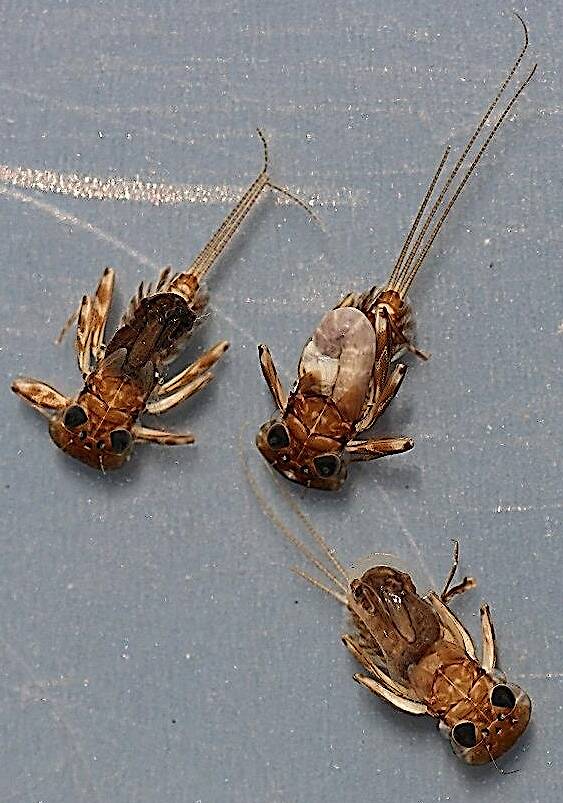
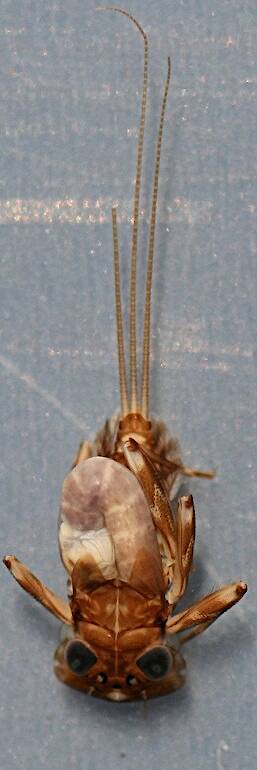
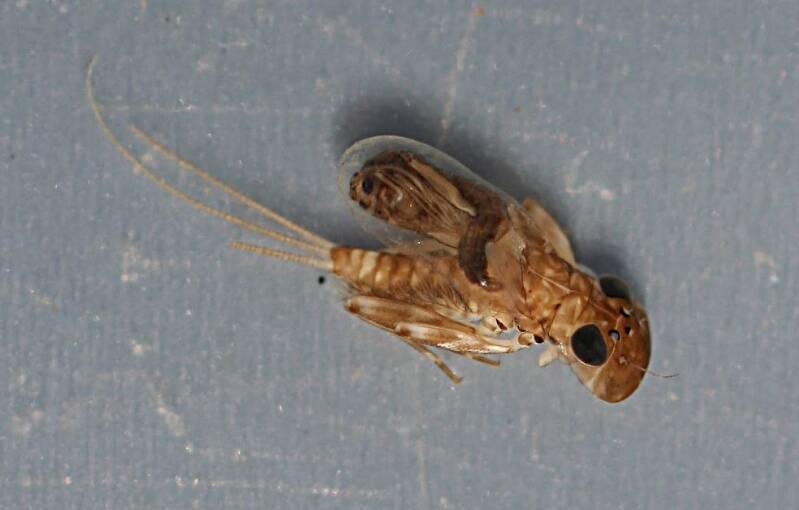
Millcreek on Jan 11, 2015January 11th, 2015, 7:07 am EST
These are Ecdyonurus nymphs with Symbiocladius parasitizing them. They were collected from Mill Creek, a tributary of the Russian River. Symbiocladius are a member of Diptera, the true flies. They attach themselves behind the wingpads and grow to maturity there without harming the Ecdyonurus nymph. They parasitize Paraleptophebia and Rhithrogena as well though not in this area.
"If we knew what it was we were doing, it would not be called research, would it?"
-Albert Einstein
-Albert Einstein
Millcreek on Jan 11, 2015January 11th, 2015, 7:26 am EST
An added note:
Here is a pdf on Symbiocladius. http://pte.au.poznan.pl/ppe/PPE1-2007/285-291_Gilka_i_in.pdf
Here is a pdf on Symbiocladius. http://pte.au.poznan.pl/ppe/PPE1-2007/285-291_Gilka_i_in.pdf
"If we knew what it was we were doing, it would not be called research, would it?"
-Albert Einstein
-Albert Einstein
Entoman on Jan 11, 2015January 11th, 2015, 7:56 am EST
Fascinating, Mark. Are they just attaching themselves for pupation or are they feeding off them?
"It's not that I find fishing so important, it's just that I find all other endeavors of Man equally unimportant... And not nearly as much fun!" Robert Traver, Anatomy of a Fisherman
Crepuscular on Jan 11, 2015January 11th, 2015, 8:13 am EST
COOL! thanks for posting Mark!
Millcreek on Jan 11, 2015January 11th, 2015, 10:06 am EST
Kurt-
They feed off them. They attach themselves and feed off haemolymph (bug blood) and associated tissues.
Eric-
You're welcome.
They feed off them. They attach themselves and feed off haemolymph (bug blood) and associated tissues.
Eric-
You're welcome.
"If we knew what it was we were doing, it would not be called research, would it?"
-Albert Einstein
-Albert Einstein
Entoman on Jan 11, 2015January 11th, 2015, 12:36 pm EST
Thanks, only noticed your link after posting my question. Oh, well...:)
"It's not that I find fishing so important, it's just that I find all other endeavors of Man equally unimportant... And not nearly as much fun!" Robert Traver, Anatomy of a Fisherman
Quick Reply
Related Discussions
Topic
Replies
Last Reply
10
Feb 27, 2012
by Oldredbarn
by Oldredbarn
1
Mar 2, 2021
by Red_green_h
by Red_green_h
1
Jun 15, 2012
by Crepuscular
by Crepuscular
6
Apr 25, 2007
by Troutnut
by Troutnut




